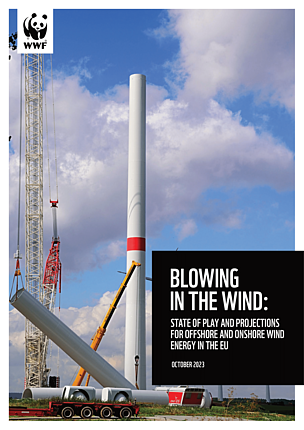Download the report
 The recent announcement by Commission President Ursula von der Leyen of a new ‘Wind Package’ during her State of the European Union (EU) emphasised again the need for the expansion of wind energy and put the spotlight on the problems the sector is facing. Earlier this year the EU agreed on a newly revised Renewable Energy Directive (RED) which includes a higher renewable energy target (RET) of 42.5%. This increase implies that Member States will have to more than double their wind energy capacity (in GW) by 2030.
The recent announcement by Commission President Ursula von der Leyen of a new ‘Wind Package’ during her State of the European Union (EU) emphasised again the need for the expansion of wind energy and put the spotlight on the problems the sector is facing. Earlier this year the EU agreed on a newly revised Renewable Energy Directive (RED) which includes a higher renewable energy target (RET) of 42.5%. This increase implies that Member States will have to more than double their wind energy capacity (in GW) by 2030.
While that would represent a step in the right direction and an opportunity to create thousands of new jobs, this is a big increase which will create challenges for Member States. Analysis shows that Member States would have to triple their current annual level of wind deployment, from 16 GW installed in 2022, to 44 GW in 2030. WWF believes this can only be achieved through holistic planning for nature and people.
Ana-Maria Seman, Climate & Infrastructure Regional Lead at WWF CEE: “For CEE countries that are lagging behind wind energy commitments, existing and planned, integrated planning of the future wind capacity is crucial, planning that should take into account nature and social commitments. CEE countries are home to a variety of important species and habitats, including mammal and bird migration routes, that ought to be properly integrated through a comprehensive spatial planning effort. At the same time, energy poverty rates point to the importance of ensuring community benefits of future renewable energy projects through measures such as requiring energy cooperatives participation in tendering procedures of wind energy projects.”
Reaching this new RED target will not be enough to stay in line with the Paris Agreement and limit global warming to under 1.5°C. This is shown in the report by the Paris Agreement Compatible (PAC) energy scenario and Ember New Generation modelling - which are both in line with WWF’s recommendations of 50% renewable energy by 2030. In fact, the report compared the compatibility of Member States’ ambitions with the PAC scenario and found that only 10 Member States are in line with this scenario.
To achieve any of these goals, Member States will need to overcome significant challenges, from the need to win local public support to expanding grid infrastructure, and speeding up permitting processes - in particular by increasing administrative capacity in competent authorities. While the deployment of wind energy needs to be massively accelerated, the transition towards 100% renewable energy should not come at the expense of nature or exploit the weakening of environmental legislation. Several studies have already outlined that it is possible to achieve targets in a nature-friendly way.
For more information please contact Florian Cassier, Climate Communications Officer WWF-EPO, fcassier@wwf.eu, +32 479 33 92 11


